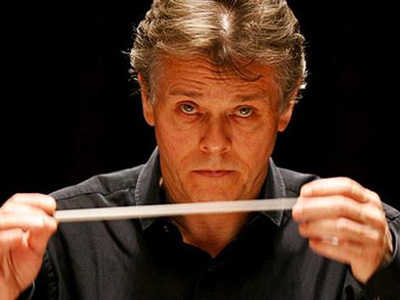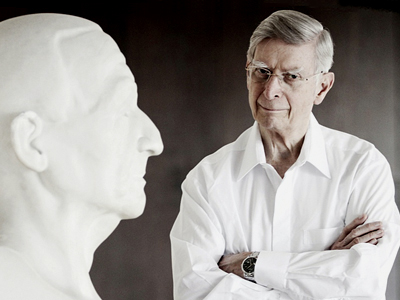
By ANDREW POWELL
Published: October 11, 2012
MUNICH — Arts groups here present a restrained 2012–13 season facing pros and cons not always aligned with those in America. Funding, for instance, holds steady: city and state (Bavaria) play their part, as do local corporations Siemens, BMW, Audi, Allianz and Linde. Excellent pools of musicians, instrumental and vocal, fill the rosters of the choir, chamber orchestra, two opera companies, and five symphony orchestras discussed below. Audiences are large and regular; not incidentally, tickets for most events are affordably priced and come with free access to the train and bus network, covering residents in a 25-mile radius. The cons are few, but they matter. Creative torpor impedes the main orchestras, a reflection in part of more than one sadly filled music directorship. The Regietheater problem rages in Germany, defiling the worthiest efforts in opera. Atrocious acoustics plague Munich’s main concert hall, and one vintage venue is shut for now for a retrofit. All that said, the groups enter the new season with active agendas.
The 201-year-old Bavarian State Orchestra ventures six programs at its home, the National Theater. Mostly led by outgoing Generalmusikdirektor Kent Nagano, these Akademie concerts extend a tradition begun when the ensemble was new; their past features names like Strauss, Walter, Knappertsbusch, Krauss, Fricsay, Sawallisch and Kleiber. Under-rehearsal can hamper results, however, a consequence of the musicians’ hectic theater schedule; that the GMD does not always supply the last ounce of insight or much rhythmic thrust only accentuates the negative. Despite and still, one upcoming program has allure (April 8 and 9): the eloquent young Czech conductor Tomáš Hanus tackles Mahler’s kaleidoscopic Seventh Symphony.
Clarinetist Jörg Widmann’s seven-scene opera Babylon is a fall commission of Bavarian State Opera, Germany’s largest and busiest opera company. Nagano conducts as part of his last season, and Carlus Padrissa, who last year introduced a circus-tent Turandot, has been entrusted with the stage action (premiere Oct. 27). Several of the season’s productions will be streamed at no charge, starting with the Widmann on Nov. 3. Hanus follows his persuasive (and filmed) Rusalka of two years ago with a revival of Jenůfa (from March 6) as well as a Richard Jones production of Hänsel und Gretel (March 24). Constantinos Carydis, among the company’s other worthy conductors — and indeed winner of its first Carlos Kleiber Prize — is absent from the 2012–13 slate, effecting a sabbatical.
The smaller but versatile Staatstheater am Gärtnerplatz company enters a second season as refugee while its genial home undergoes construction work. Not all the substitute venues are ideal, but at the Cuvilliés Theater a Don Pasquale (premiere Oct. 25) should bring smiles: Franz Hawlata sings the title role, retired mezzo-soprano Brigitte Fassbaender (pictured with Intendant Josef Köpplinger and conductor Marco Comin) serves as régisseuse. This company labors under a mixed mandate, complementing Bavarian State Opera with Baroque and rare operas but also catering to a broad audience with operettas and musicals, at times amplified. Its orchestra copes gamely with the assortment, its singers less well.
Alexander Liebreich’s ongoing leadership of the MKO, a.k.a. Münchener Kammerorchester, has been yielding tidy ensemble and a crisp image for the group. Subscription concerts at MKO’s base, the Bayreuth-Festspielhaus-like Prinz-Regenten-Theater, habitually pair old and brand new, as on Oct. 18: Salvatore Sciarrino’s L’ideale lucente e le pagine rubate (2012) and Beethoven’s music for Egmont. Or Dec. 13: Ligeti’s Violin Concerto (old) and a Helena Winkelman piece jointly commissioned with Musica femina München.
Guest conductors, in contrast, are what enliven the Bavarian Radio Symphony Orchestra. Ranked highly for its expertise, and drilled weekly for clean-as-a-whistle broadcasts, the BRSO perseveres under monochrome directorship. Antonini, Rattle, Haitink, Muti, Harding, Gilbert, Robertson, Salonen, Chailly and Metzmacher are names implying color in upcoming programs. The season splits as usual between the modest shoebox Herkulessaal, part of Munich’s Residenz arts complex, and the city-operated, fan-cum-vineyard Gasteig hall, where only the intra-ensemble sound travels properly.
The adventurous Münchner Rundfunk-Orchester, a second BR (Bavarian Broadcasting) ensemble, devotes much of 2012–13 to oddball concert opera — Franz Lachner’s Catharina Cornaro? — when its exploratory funds would go further in orchestral music and better balance the BRSO. Welcome projects include a German-language take (May 3) on Hindemith’s FDR oratorio When Lilacs Last In the Dooryard Bloom’d, which may find its way to disc alongside this orchestra’s award-winning 2005 recording of Des Simplicius Simplicissimus Jugend by Hartmann (who wove the Whitman elegy into his own First Symphony). Playing standards have been high under Künstlerischer Leiter Ulf Schirmer. He stepped into the shoes of the late Marcello Viotti in 2006 and has more recently also assumed musical and managerial duties at Oper Leipzig.
Still under broadcasting auspices, the BR Chor supports both of the above orchestras. Alert, flexible singing places this group among Germany’s best large choirs, with perhaps only Leipzig’s MDR Chor ahead in precision. Certainly it draws the better Munich choristers, those disinclined to strip down to their underwear and strike mindless poses, as repeatedly required of their colleagues in local opera companies. Dutchman Peter Dijkstra is the affable artistic leader. BR Chor concerts this season, in the group’s own series, include Mozart’s C-Minor Mass (Nov. 24) and a well-cast Matthäus-Passion (Feb. 16), at the Prinz-Regenten-Theater and Herkulessaal respectively.
The Munich Philharmonic seemed to want to dive off a cliff three years ago when its management publicly bickered with its greatly-in-demand Generalmusikdirektor Christian Thielemann, effectively losing him, and just eight months later chose Lorin Maazel as his successor. (One tabloid reported Thielemann’s salary to be €800,000.) Those twin decisions are now home to roost, as the 82-year-old American unfurls his inaugural season. Maazel’s work ethic can only be admired, but he appeared artistically drained in interregnum Gasteig programs ten months ago — in music in which he long ago excelled, such as Debussy’s La Mer. This orchestra will gain the most if Munich ever does build a proper concert hall, as recently championed by Bavarian Minister for Science, Research and Art, Wolfgang Heubisch. As a city-run ensemble, it is today confined almost entirely to the problematic Gasteig.
Less glamorous, though certainly busy, the Münchner Symphoniker offers concert series at the acoustically preferable Prinz-Regenten-Theater and Herkulessaal. Georg Schmöhe is Chefdirigent and pianist Philippe Entremont serves as Ehrendirigent. In 2011 this orchestra undertook a long U.S. tour devoted to movie music. This season at home it offers an all-Beethoven program (Jan. 27 and 28) and a mostly Haydn evening (March 20) as part of a generally conservative lineup.
Photo © Christian Zach
Related posts:
Pintscher Conducts New Music
Mastersingers’ Depression
Gärtnerplatztheater Reopens
Gergiev, Munich’s Mistake
BR Chor’s St Matthew Passion





A Stirring Evening (and Music)
Wednesday, April 24th, 2013By ANDREW POWELL
Published: April 24, 2013
MUNICH — Members of the Bavarian Radio Symphony Orchestra venture six times a year to Lake Starnberg, some 20 miles southwest of here, to play chamber music at the Evangelische Akademie Tutzing, or EAT, as its website favicon reads. A mid-season program (Feb. 24) paired quintets by Mozart and Schumann in the venue’s airy music room, drawing skilled performances. But extra-musical ghosts disturbed this particular offering: concert tickets include a guided tour of EAT — once a lone lakeshore chapel, later a castle, palace and U.S. Army HQ — and our evening began with docent tales of, among other matter, a 1945 American troop obliteration of the palace library, Dwight Eisenhower’s name being dropped for good measure.
What? The troops fight their way into Bavaria, set up at Tutzing Palace to administer a new basis for democracy, and are remembered for trashing books? So much for perspective. Then again, Tutzing can seem stuck in the 1920s and 30s: Adolf Hitler’s beer-hall putsch buddy Erich Ludendorff is grandly buried there and the former fishing village memorializes “Hitler’s pianist” Elly Ney — Carnegie Hall attraction in 1921, ardent Nazi by 1933 — on its much-visited Brahms Promenade. Physically the town has changed little over the decades.
Our thoughts stirred by the guide’s earful, we crossed the yard for musical respite. Mozart’s G-Minor String Quintet, K516, resounded in handsome proportion and balance. Antonio Spiller, first violin, stressed the cheery second theme of the opening Allegro emphatically enough to prepare for Mozart’s abrupt turn in the closing movement. Leopold Lercher, Andreas Marschik and Christa Jardine partnered him attentively throughout, even if they couldn’t quite match his poise and confidence. Cellist Helmut Veihelmann intoned with care, but the ear craved more of a grounding, more cello volume. In the Schumann Piano Quintet, after a coffee break and snowy stroll by the lake (pictured), unrestrained collegial exchanges and pianist Silvia Natiello-Spiller’s buoyant passagework found color aplenty, even kitschy color. Marschik took the viola part.
EAT’s buildings date to medieval times. The small chapel got wrapped in a castle in the 16th century, its watery and Alpine views appropriated. Sundry owners and architects later morphed the premises into a modest post-Baroque palace. In 1947 the Lutheran Church assumed control, followed by ownership two years later in a 350,000-Mark deal. Tranquil seminars and coffee-table conferences now prevail along with occasional music events, such as those of the BRSO ensembles.
Given the pre-concert assertions and the irksome notion of book destruction, this U.S. listener decided on a little post-concert research. Quick findings: Eisenhower did spend time in Tutzing in the 1940s, returning there repeatedly for off-duty art lessons in 1951, but where he stayed isn’t clear; and the palace library did vanish during the 1939–45 war, but whether the honors fell to the U.S. Army isn’t clear at all. And regardless of what happened to the books, the American presence achieved positive results in Tutzing starting immediately.
Indeed, one life-saving story would well serve EAT’s docent and his Bayerischer Rundfunk (BR) pre-concert narrative. On the night of April 29, 1945, a train of prisoners — Russians, Romanians, Hungarians and Poles — pulled into Tutzing station. 800 in number and mostly men, they had been dispatched from Bavaria’s newly wound-down Mühldorf concentration camp, east of Munich, to the Tyrol, and to slaughter at the hands of waiting SS personnel. But a providential delay occurred — Tutzing is 90 minutes from the Tyrol — attributed variously to a faulty locomotive, a righteous local flagman, and even a prescient German commanding officer.
The next morning, on the same day that Hitler turned the lights out and Munich fell to the Allies, the XX Corps, part of George Patton’s U.S. Third Army, reached the town. Little fighting ensued because Tutzing was a Red Cross safe zone. The troops soon located the Benedictine Hospital crammed with wounded German soldiers, and the makeshift care beds arrayed in the high school and other buildings. Then they found the train, confronting directly the horror of camp survivors and at first wrongly concluding that Tutzing itself had been a camp location. The prisoners were told of their freedom, and the weakest removed from the train for treatment.
Decisive action followed. The American command seized a number of Tutzing homes for emergency use, instructing the locals to double up with their neighbors. The less seriously wounded of the German soldiers now lost their hospital beds to Mühldorf survivors in critical condition, the majority of them Jewish Hungarians. Although educated by the Reich to resist the enemy to the bitter end, many Tutzingers waved white flags for the U.S. troops, engendering whistles of censure from their more determined neighbors.
On May 1 the troops located a Nazi school campus on high ground in the next village, Feldafing, and rapidly commandeered it to serve as a new home and care facility for the former prisoners, now officially “displaced persons.” (Novelist and social critic Thomas Mann had owned a condo retreat in one of the campus buildings. He lived in Munich for 40 years before fleeing the country upon Hitler’s ascendancy in 1933.) On the morning of May 2, a working locomotive having been procured, the Todeszug crept back three miles the way it had come and transferred the survivors, giving them real beds and room to roam. Months later, after it became clear across Germany that ethnic groups among former prisoners did not always get along with each other, each displaced-person facility would become designated for a specific group, Feldafing for Jewish Hungarian survivors. With a population that eventually climbed above 4,000, the site would gain a reputation as “a place … to find missing people.”
The war raged for another five days before tacit German surrender May 7 at Reims. American troops requisitioned Tutzing Palace on June 7, setting up Army of Occupation HQ there three days later. This remained operative until the end of 1945, a pivotal command center at the very start of the 10-year Allied Occupation of Germany. In context, the books seem inconsequential.
Photo © Evangelische Akademie Tutzing
Related posts:
Brahms Days in Tutzing
Tutzing Returns to Brahms
BRSO Adopts Speedier Website
Tonhalle Lights Up the Beyond
Petrenko Hosts Petrenko
Tags:Andreas Marschik, Antonio Spiller, Bavarian Radio Symphony Orchestra, Bayerischer Rundfunk, BR, Christa Jardine, Commentary, Dwight Eisenhower, Elly Ney, Erich Ludendorff, Evangelische Akademie, Feldafing, Helmut Veihelmann, Lake Starnberg, Leopold Lercher, Lutheran Church, Nazi Germany, Review, Schumann, Silvia Natiello-Spiller, Symphonie-Orchester des Bayerischen Rundfunks, Thomas Mann, Tutzing, Wolfgang Amadeus Mozart
Posted in Munich Times | Comments Closed